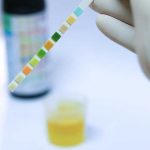- What Happens When You Mix Tramadol & Alcohol?
- Dangers Of Mixing Tramadol & Alcohol
- Treating Tramadol & Alcohol Abuse
Tramadol is a prescription medication for moderate to severe pain. It’s sold under the brand names ConZip, Ultram, and Ultracet (tramadol and acetaminophen).
It’s an opioid, but many doctors think it’s less addictive than other opiates like OxyContin (oxycodone) or Vicodin (hydrocodone). The U.S. Drug Enforcement Administration (DEA) classifies tramadol as a schedule IV controlled substance with less abuse potential than other opioids.
But like other opioids, it’s not safe to take tramadol with alcohol. Mixing the two substances raises the risk of adverse side effects, overdose, and other dangerous consequences.
What Happens When You Mix Tramadol & Alcohol?
Alcohol and tramadol are both central nervous system depressants. At low doses, they can cause a sense of relaxation and euphoria. This sensation may be intensified when you mix the two.
Mixing tramadol and alcohol also increases the sedative effects of both substances. You may become heavily sedated, especially if you use high doses. As depressants, tramadol and alcohol slow down your central nervous system (heart rate, breathing, and other vital functions).
Dangers Of Mixing Tramadol & Alcohol
The U.S. Food and Drug Administration (FDA) warns against drinking alcohol while you’re on tramadol because of the risk of severe respiratory depression. Combining the two can slow down your breathing rate so much that you lose consciousness, which could result in a coma or death.
There are several other dangers of mixing tramadol and alcohol, as well.
Increased Side Effects
Drinking alcohol with tramadol increases the risk of adverse side effects that can occur with tramadol use, such as:
- drowsiness
- dry mouth
- headache
- heartburn
- stomach upset
- mood swings
- nervousness
Overdose
Mixing alcohol and tramadol raises the risk of overdose with either substance. Your body has to work harder to process two drugs, and is therefore less efficient at getting the toxins out quickly. It’s also more difficult to tell when you’ve had enough.
Symptoms of a tramadol and alcohol overdose include:
- cold, clammy skin
- slow heart rate
- difficulty responding or staying awake
- extreme drowsiness
- loss of consciousness
Weak muscles and pinpoint pupils are unique opioid overdose symptoms that can occur if you take too much tramadol.
You may also have unique symptoms of alcohol overdose (alcohol poisoning), like:
- very low body temperature
- confusion
- vomiting
- seizures
When you take high amounts of tramadol and alcohol, you have an increased risk of respiratory depression (slow, shallow, difficult breathing). If severely slowed breathing lasts long enough, it can result in brain damage from a lack of oxygen flow to the brain.
Narcan (naloxone) is a widely available opioid overdose reversal agent, but it isn’t as effective for a tramadol overdose as for other opioids. And if you combine tramadol with alcohol, naloxone won’t take away alcohol poisoning symptoms.
Harm To Yourself Or Others
Drugs and alcohol change your mental state while you’re intoxicated. You’re more likely to engage in risky behaviors that you wouldn’t do sober, such as:
- driving under the influence (causing an accident with innocent victims)
- having unprotected sex (getting or spreading a disease like HIV and Hepatitis C)
- neglecting a child (who gets hurt because you’re not paying attention)
- foolish financial decisions (such as quitting a job or spending too much money)
Polysubstance abuse (such as mixing drugs and alcohol) increases the risk of harmful behaviors because you’re likely to get more intoxicated than you would with just one substance.
Physical Dependence
As depressant drugs, tramadol and alcohol both cause physical dependence. When you take them for a while, your body adjusts to them so that it needs them to function. If you suddenly stop drinking alcohol or taking tramadol, your body will need time to readjust.
The process of your body getting rid of a drug is called detoxification (detox). During detox, you’ll have withdrawal symptoms if you’re physically dependent. Alcohol withdrawal is life-threatening. In some cases, tramadol withdrawal is too.
Withdrawal symptoms are frequently more severe if you abuse multiple substances.
Physical dependence often goes hand-in-hand with addiction. If your body needs a drug, your mind will probably start to need it too.
Addiction
Addiction is a mental disease in which you compulsively use a drug (or alcohol) despite noticeable negative results. Your health and relationships may be suffering, your bank account may be empty, but you still feel unable to stop taking tramadol, drinking alcohol, or both.
Just as drugs and alcohol change how your body functions, they also change how your mind works. Each time you drink or take tramadol, you reinforce the need to have that drug. You feed the cravings, and they get more intense.
If you or a loved one have an alcohol or tramadol addiction, it’s not something to take lightly. Addiction can consume you and destroy your life. Now is the time to ask for help.
Treating Tramadol & Alcohol Abuse
Whether you’re addicted to tramadol, alcohol, or both, there’s hope.
At Northeast Addictions Treatment Center, we offer comprehensive outpatient addiction treatment options that can help address both alcohol and tramadol abuse.
Rehab for substance use disorders is rooted in behavioral therapy, which we blend with other methods that nurture your physical and mental health. Our treatment programs are personalized to your situation, so you receive the most effective care for your recovery.
For more information, please contact us today.
Sources
- National Institute on Alcohol Abuse and Alcoholism — Understanding the Dangers of Alcohol Overdose
- National Library of Medicine: MedlinePlus — Tramadol
- Proceedings of Singapore Healthcare — Tramadol Overdose: A Case Report
- Washington Medical Commission — Is Tramadol an Opioid or a Nonopioid Analgesic? Yes!
Written by
Northeast Addition Editorial Team
©2024 Northeast Addition Center | All Rights Reserved
This page does not provide medical advice.


